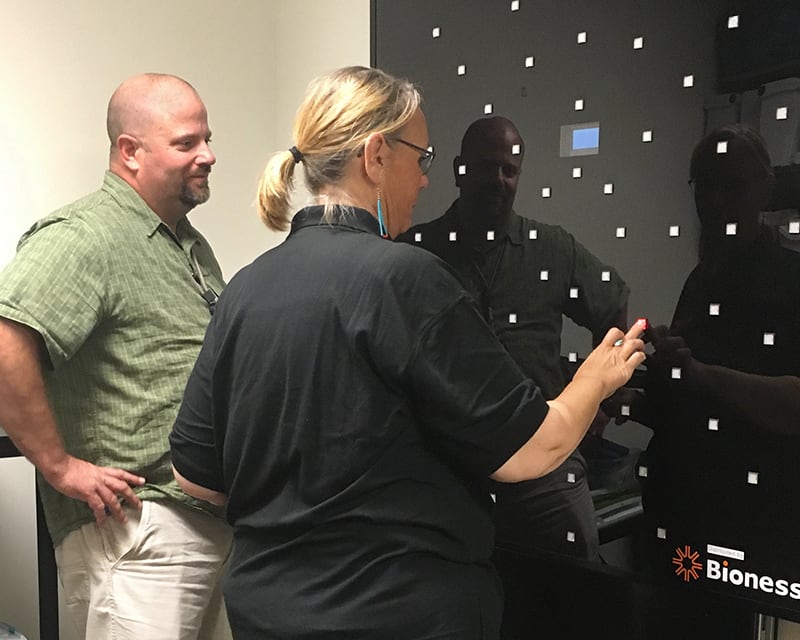I have spent the majority of life as an occupational therapist working with adults with neurologic injury. I spent the first eight years or so working in neuro inpatient rehab programs and then spent about five years teaching at the University of Utah.
I was introduced to low vision when the university asked me to start a faculty practice. The lead program for the practice was low vision.
JoAnne Wright, the director of Utah’s OT school, suggested the UAB Graduate Certificate in Low Vision Rehabilitation program, directed by Mary Warren, as a way to get up to speed on low vision. To be honest, I have always had an interest in vision and I thought I had a pretty good handle on vision. I soon learned this was naive at best. Understanding vision as our predominate sense, is so important and immense.
One class, one semester at a time
At one class a semester, I started my road to understanding the visual system and how as an OT I could help my clients. I remember during each class learning so much that I wish I had known years earlier. I kept thinking of previous clients that I could have helped more if I had known a few more details of the vision system.
By the time I graduated from the program, I had completed the observation hours necessary and worked with other members of the low vision community to qualify to take the exam for becoming a certified low vision specialist. This is not the certification sponsored by AOTA (that will come next, Mary), but it is the certification that is better known in the low vision community. I passed the test thanks to the preparation of the graduate certificate.
Returning to roots
Since then, I stepped away from teaching and am now an outpatient therapist working again with patients with neurologic injury. I also spend one day a week working in the clinic that I helped start, working primarily with low vision clients that are referred from the Moran Eye Center, the largest research and treatment center in the intermountain west.
I never realized how much I would use my low vision training.
From in-services to my coworkers in the neuro outpatient facility, lectures to community balance programs and several lectures a year at the university of Utah OT program in low vision – I am constantly giving lectures in the community. Now that I have returned to work as a clinician, I feel the training I received in the low vision program is really paying off.
The understanding I now have is so helpful in addressing visual perceptual and oculomotor impairments that are so common with the neurologic populations. I feel my treatments now impact many patients and help these clients return to participation in meaningful activities.
Impacting lives
Recently, I worked with concussion clients who had been unable to go to school and could not read for more than a few minutes. After the initial evaluation, I suggested low power reading glasses to decrease the effects of the convergence problem and helped come up with activities that challenged the visual motor impaired range of motion. Over several weeks of treatment these client met their reading goals and were able to return to school and even tolerate long tests.
Thanks to Dr. Warren’s brain injury class, I figured out that a gentleman who everyone thought his vision acuity was the primary impairment, actually had a problem with visual attention and his ability to scan in organized manners. By providing him practice scanning techniques and using adaptive strategies, this man is essentially learning to read again.
These cases are difficult, but what feels great is that I now have the skills as an OT who understands the visual system to help these clients in a meaningful way. When I think back on the last couple of years the number of clients that I have been able to help is growing.
There are so many examples of people I have had a chance to help. I feel that my skills as an OT have been greatly improved as a result of my involvement with the Graduate Certificate in Low Vision Rehabilitation program at UAB. The teachers are skilled clinicians as well as great educators.
